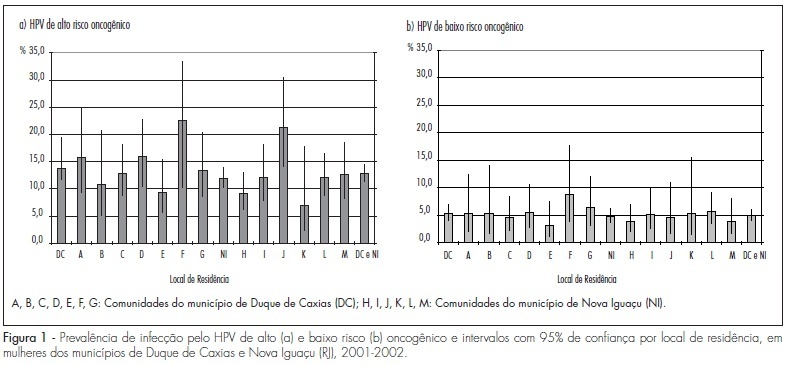
PURPOSE: to evaluate the prevalence of HPV infection and associated factors among women living in the “Baixada Fluminense”, state of Rio de Janeiro, Brazil. METHODS: a cross-sectional study conducted on a sample of 2,056 women aged 25-59 years covered by the Family Health Program in the municipalities of Duque de Caxias and Nova Iguaçu, state of Rio de Janeiro, southeastern Brazil. All women were submitted to the Papanicolaou and HPV detection tests in a single session by second-generation hybrid capture from December 2001 to July 2002. The prevalence of HPV was stratified by age, place of residence, schooling, smoking habit, and sexual and reproductive history. The prevalence rates associated with the studied variables were calculated by Multivariate Poisson regression. RESULTS: the prevalence of HPV was 12.3% and 5.0% for high-risk and low-risk HPV types, respectively. A reduction in high-risk HPV prevalence was observed with aging, with an increase in the 55-59 year age range. After adjusting for age, schooling, smoking, early sexual initiation and parity, high-risk HPV infection was associated with not living with a partner (1.4; 95%CI=1.1-1.8) and having more than one sexual partner (an increase of 1.4%; 95%CI=1.1-1.6, for each lifetime sexual partner). CONCLUSIONS: the prevalence of HPV was lower than that reported in other Brazilians studies, most likely because our sample was population-based. HPV infection was associated only with factors related to sexual behavior, but the potential association between HPV infection and smoking still needs to be better understood. Further studies are needed to explore these issues, as well as postmenopausal increased infection rates, and to identify the most prevalent HPV types in the Brazilian population.
Search
Search in:


Comments